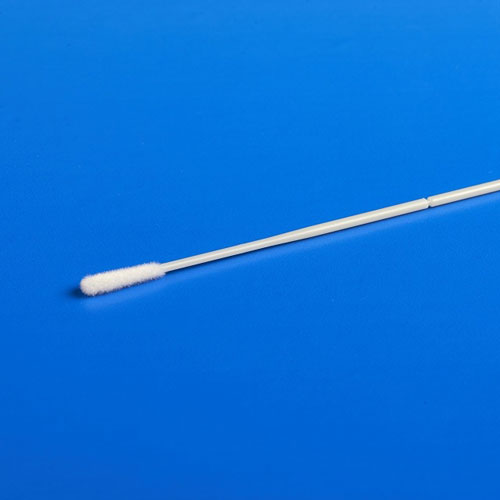เมื่อมีการตรวจกรดนิวคลีอิกรอบใหม่ในเซี่ยงไฮ้, เกิดเป็นข่าวลือแพร่สะพัดในโซเชียลถึงผลกระทบว่า “ก้านสำลีที่ใช้สุ่มตัวอย่างมีน้ำยาอยู่และเป็นพิษ”. ชาวเน็ตบางคนทิ้งข้อความไว้บน “เซี่ยงไฮ้ปฏิเสธแพลตฟอร์มข่าวลือ” saying that the elderly at home did not want to participate in nucleic acid screening after seeing the relevant rumors, and also persuaded young people to try their best not to undergo nucleic acid testing and antigen testing.
Is there a difference between the swabs used in nucleic acid testing and antigen testing and ordinary cotton swabs?
Will the above reagents threaten health?
The answer is: no threat to health! The Shanghai refutes rumors platform asked a number of test kit manufacturers for verification, and all received a clear answer that “sampling cotton swabs are different from those used in daily life, they do not contain reagents, nor are they toxic.”
Strictly speaking, the cotton swabs used for sampling should be called “สุ่มตัวอย่าง”, not “สำลี”, because they are not cotton swabs used in daily life. The biggest difference between the two is that the cotton swabs in daily life are made of absorbent cotton, while the sampling swabs look similar to ordinary cotton swabs, but the top is actually a flocked swab.
Why use flocked swabs for nucleic acid testing and antigen testing?
ก ไม้กวาดแห่ is used because it is more suitable for sampling and testing. The flocking swab is made of nylon fiber flocking technology, and the front end is coated with nylon short fibers fixed in a vertical manner, so that there is no absorption hole in the entire collection area of the swab. ด้วยวิธีนี้, the collected sample is not dispersed and retained in the fiber, which facilitates faster and more efficient elution. Relevant data show that flocking swabs can elute more than 85% of the sample collection; สำลีแบบดั้งเดิม, โดยเฉพาะที่ทำจากผ้าฝ้ายดูดซับ, ไม่สามารถรวบรวมและแยกตัวอย่างได้อย่างสมบูรณ์.

ในความเป็นจริง, any citizen who has done “family stab” can also feel the difference between the sampling swab and the ordinary cotton swab: when using the antigen detection kit, the sampling swab needs to be rotated and mixed in the preservation solution for at least 30 seconds after sampling. , and then squeeze the swab head across the outer wall of the sampling tube for at least 5 วินาที, thus completing the elution of the sample. If it is an ordinary cotton swab, not only can the sample not be eluted during this process, but the absorbent cotton will absorb the preservation solution, and even if it is squeezed out, it is a mixture of the sample and the preservation solution.
The online claim that “sampling cotton swabs are poisonous” is completely nonsense. Sampling swabs are produced for sampling, and do not contain any soaking reagents themselves, nor do they need to contain reagents; ในเวลาเดียวกัน, sampling swabs are medical devices, and the basic requirements for qualified products are non-toxic and harmless.
In order to learn more about sampling swabs, we randomly selected antigen detection kits circulating in the market to see what sampling swabs they were paired with. Judging from the collected sampling swabs, all of them are small independent packages, and the Chinese product name is “ไม้กวาดเก็บตัวอย่างแบบใช้แล้วทิ้ง” instead of “cotton swab”. There are medical device filing certificate information on the product packaging.
มากมาย sampling swab manufacturers have stated that according to national regulations, single-use sampling swabs belong to a class of medical device products, not only production must be filed, but also strict production environment requirements and quality supervision standards, qualified products must be non-toxic harmless. ในเวลาเดียวกัน, “ไม้กวาดเก็บตัวอย่างแบบใช้แล้วทิ้ง” is a general product in the medical field, which can sample different parts and be used in different detection behaviors. It is not specially produced for nucleic acid detection or antigen detection, so the swab will not contain other reagents.

















